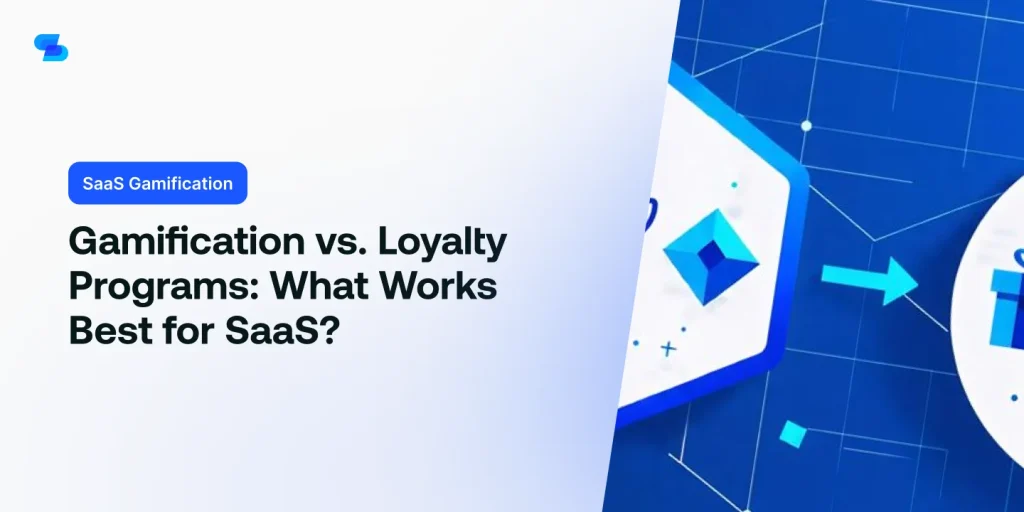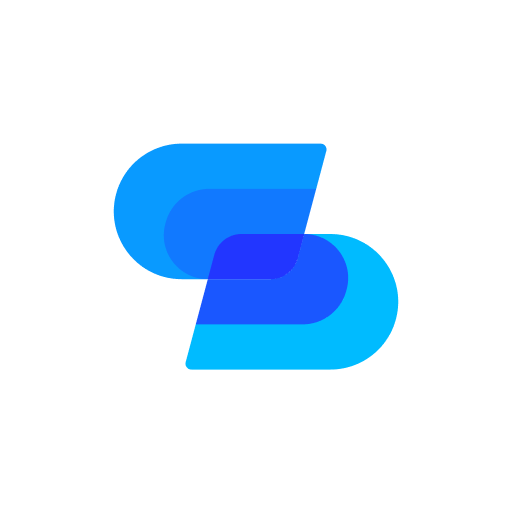When you’re looking to boost engagement in your SaaS product, you’ll often find yourself weighing the merits of gamification against loyalty programs. Both strategies can greatly impact user retention and satisfaction, but their effectiveness varies depending on your specific goals and target audience. Recent data shows that gamified elements can increase user engagement by up to 40%, while well-designed loyalty programs can boost customer lifetime value by 30%. However, these figures don’t tell the whole story. To truly understand which approach—or combination of approaches—will work best for your SaaS, you’ll need to evaluate several key factors that influence their success.
Understanding Gamification in SaaS
Gamification in SaaS leverages game-like elements to boost user engagement, with 70% of Forbes Global 2000 companies using it to improve customer retention and productivity. This strategy taps into users’ intrinsic motivations, encouraging them to interact more frequently and deeply with your software.
To implement gamification effectively, you’ll need to understand your users’ goals and pain points. Start by integrating progress bars, achievement badges, or leaderboards into your interface. These elements create a sense of accomplishment and healthy competition. For example, Duolingo uses streaks and XP points to keep language learners motivated, resulting in a 5% increase in user retention for every badge earned.
Gamification isn’t just about fun; it’s about driving specific behaviors. Set clear objectives, such as increasing daily active users or boosting feature adoption. Then, design game mechanics that align with these goals. Measure your success using key performance indicators (KPIs) like engagement rates, time spent in-app, and user retention.
Loyalty Programs: A SaaS Perspective
In contrast to gamification, loyalty programs in SaaS focus on rewarding customers for their continued patronage, with 75% of consumers more likely to make another purchase after receiving incentives. These programs typically offer points, discounts, or exclusive features to encourage long-term engagement and reduce churn rates.
Implementing a loyalty program in your SaaS business can increase customer lifetime value by up to 30%. Start by identifying key actions that drive value, such as referrals, upgrades, or feature usage. Then, create a tiered reward system that offers increasingly valuable benefits as customers progress.
To maximize effectiveness, personalize rewards based on user preferences and behavior. Research shows that 79% of customers are more likely to engage with a brand that offers personalized experiences. Additionally, leverage data analytics to track program performance and optimize rewards over time.
Don’t forget to communicate the program’s benefits clearly to your users. Use email marketing, in-app notifications, and your website to promote the loyalty program. Remember, successful SaaS loyalty programs focus on providing value that aligns with your customers’ goals, not just offering generic discounts or points.
Engagement Metrics and User Behavior
Three key engagement metrics you should track to understand user behavior in gamified systems and loyalty programs are: daily active users (DAU), retention rate, and user session length.
These metrics provide valuable insights into how users interact with your SaaS platform and the effectiveness of your engagement strategies.
DAU measures the number of unique users who engage with your platform daily. It’s a strong indicator of your product’s stickiness and overall user engagement. To improve DAU, focus on creating compelling daily incentives or challenges.
Retention rate shows the percentage of users who return to your platform over time. A high retention rate indicates that your gamification or loyalty program is successfully keeping users engaged. Implement personalized rewards and milestones to boost retention.
User session length reveals how much time users spend on your platform per visit. Longer sessions often correlate with higher engagement and satisfaction. Encourage extended sessions by offering progressive challenges or tiered rewards.
Cost-Benefit Analysis of Both Approaches
When weighing the implementation of gamification or loyalty programs, you’ll need to conduct a thorough cost-benefit analysis to determine which approach aligns best with your business goals and budget constraints.
Start by evaluating the initial investment required for each strategy. Gamification often demands higher upfront costs due to software development, game design, and integration with existing systems. Loyalty programs, on the other hand, may have lower initial expenses but can incur ongoing costs for rewards and program management.
Next, analyze the potential returns. Gamification can boost user engagement by 48% and increase conversions by up to 7 times. Loyalty programs, meanwhile, can improve customer retention by 5% and increase profits by 25-95%.
Consider the long-term impact on customer lifetime value (CLV) and churn rates. Gamification may lead to a 20% increase in CLV, while loyalty programs can reduce churn by 15-25%.
Factor in scalability and maintenance costs. Gamification requires regular updates to maintain user interest, while loyalty programs need ongoing reward fulfillment.
Case Studies: Successes and Failures
Let’s plunge into real-world examples that showcase both triumphs and pitfalls of gamification and loyalty programs in SaaS businesses.
Duolingo’s gamification success story stands out. Their language-learning app employs streaks, levels, and leaderboards, resulting in a 50% increase in daily active users.
Dropbox’s referral program, offering extra storage for inviting friends, led to a 3900% growth in 15 months.
On the flip side, Foursquare’s gamification failure serves as a cautionary tale. Their badge system initially drove engagement but lost appeal over time, leading to a significant user drop.
For loyalty programs, Adobe’s Creative Cloud subscription model offers tiered benefits, increasing customer lifetime value by 33%.
However, Evernote’s points-based system fell short, failing to drive meaningful engagement or retention.
These case studies reveal key insights: successful gamification taps into intrinsic motivation, while effective loyalty programs offer tangible, valuable rewards.
Both approaches require constant iteration and user feedback. You’ll need to closely monitor metrics like user engagement, retention rates, and customer lifetime value to gauge success.
Implementing Strategies: Best Practices
Armed with insights from these case studies, you’ll want to focus on implementing proven strategies that can boost your SaaS business’s gamification or loyalty program efforts.
Start by clearly defining your objectives and key performance indicators (KPIs) to measure success. Align these goals with your overall business strategy and customer needs.
Next, design a user-friendly interface that’s intuitive and engaging. Incorporate elements like progress bars, badges, and leaderboards to motivate users. Guarantee your rewards are valuable and attainable, striking a balance between challenge and achievability.
Personalization is essential. Use data analytics to tailor experiences and rewards to individual user preferences and behaviors. Implement a robust onboarding process to familiarize users with your program’s features and benefits.
Regular communication is key. Keep users informed about their progress, new challenges, and rewards through in-app notifications, emails, or push notifications. Continuously gather feedback and analyze user data to refine and improve your program.
Lastly, integrate your gamification or loyalty program seamlessly with your core product. This integration guarantees a cohesive user experience and reinforces the value of your SaaS offering.
Future Trends in SaaS Engagement
The future of SaaS engagement is rapidly evolving, with emerging technologies and shifting user expectations shaping new trends in gamification and loyalty programs.
You’ll see AI and machine learning playing a pivotal role, personalizing experiences and predicting user behavior to enhance engagement strategies.
Virtual and augmented reality will create immersive gamification experiences, making loyalty programs more interactive and engaging.
Blockchain technology will revolutionize reward systems, offering transparent, secure, and easily transferable loyalty points.
You’ll notice a shift towards hyper-personalization, with programs tailored to individual preferences and behaviors.
Social elements will become more prominent, fostering community-driven engagement and peer-to-peer interactions within SaaS platforms.
Voice-activated interfaces will simplify user interactions, making gamification more accessible and intuitive.
You’ll witness the rise of micro-rewards, instant gratifications that boost user motivation and engagement.
Data analytics will become more sophisticated, allowing you to measure and optimize engagement strategies in real-time.
Expect to see a convergence of gamification and loyalty programs, creating holistic engagement ecosystems that seamlessly blend rewards, challenges, and social elements to drive user retention and satisfaction in the SaaS industry.
To Wrap Up
You’ve seen how gamification and loyalty programs can boost SaaS engagement.
To maximize results, integrate both strategies based on your unique user base and product offering.
Track key metrics like user activity, retention, and lifetime value to measure success.
Don’t forget to analyze costs and ROI.
Stay updated on emerging trends and continuously refine your approach.
By leveraging these tactics effectively, you’ll drive user satisfaction, loyalty, and ultimately, your SaaS business growth.

